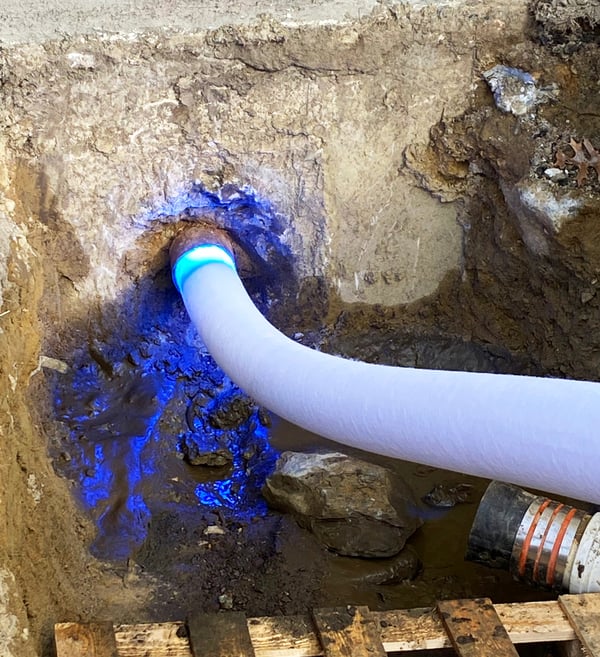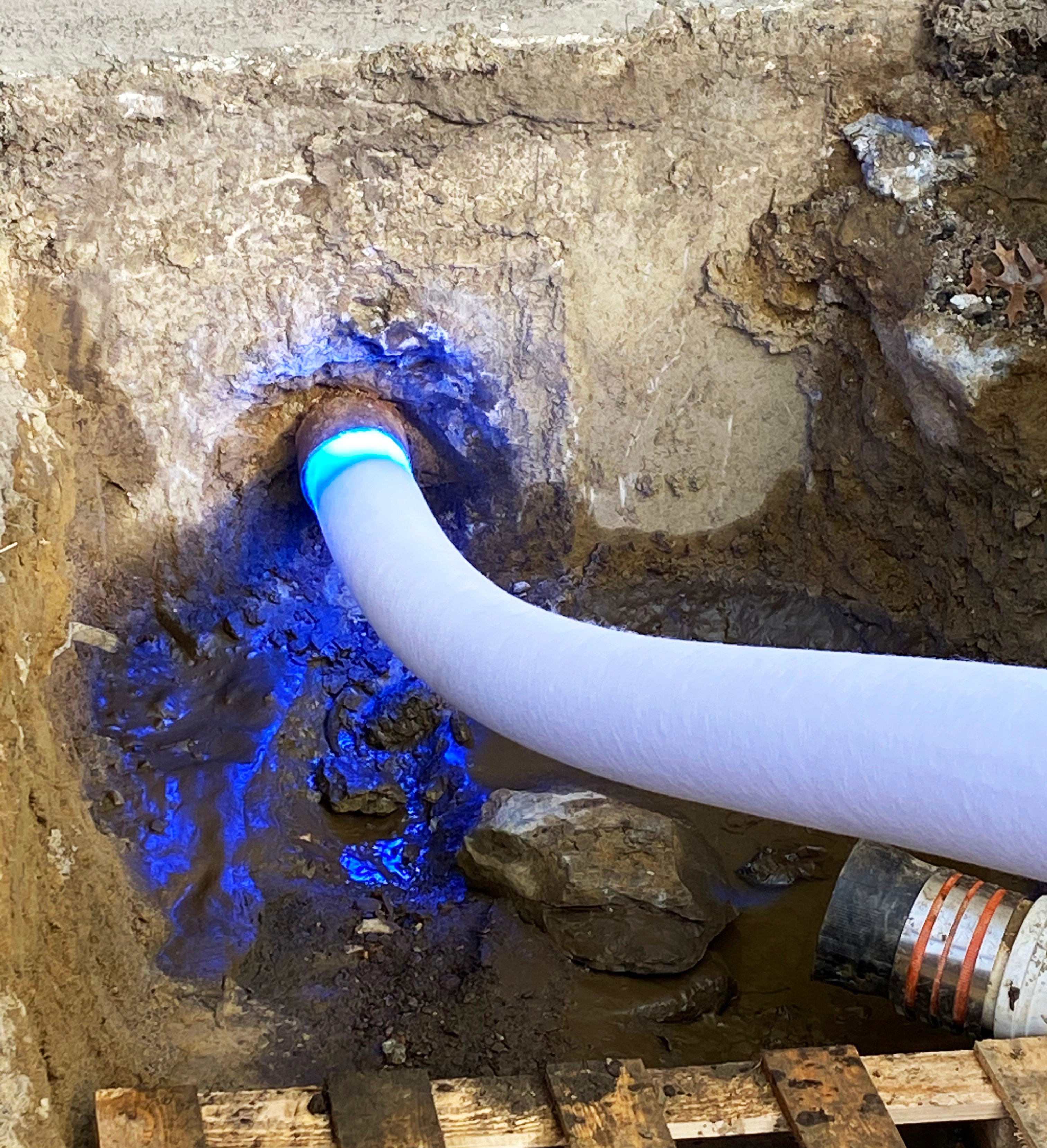Cured-in-place pipe (CIPP) installation is made more difficult by active infiltration, which occurs when groundwater seeps through cracks, joints or manholes into sewer pipes. New CIPPs should be tight-fitting and jointless to seal off any possible points of entry for infiltration. Unfortunately, CIPP does not eliminate infiltration from entering the existing host pipe. Infiltration is dangerous to the installation process because too much flow can wash the resin off of the new liner and/or prevent the liner from installing correctly. However, the type of cure used for installation can make a difference in the effects of infiltration.
Rehab specialists use two primary means of curing pipe liners: heat and light. For heat-cured CIPP, a resin-soaked liner is inserted into the existing pipe and inflated using cold water. Next, an on-site boiler heats water and circulates it through the pipe. The heat of the water cures the resin and solidifies it. Lastly, cold water is circulated again to cool the liner.
For light-cured CIPP, a resin-soaked liner is inserted into the existing pipe and is inflated using pressurized air. Instead of circulating a medium like water through the pipe, a device called a light train is inserted and ultraviolet light is used to harden the resin.

The Benefits of Light Cure

In lines with higher infiltration rates, overall light cure is the more manageable option of the two curing methods. With light cure, installers have power over the amount of light present in a pipe, making it easy to control exactly how the resin-soaked liner cures. Light cure’s final product is also more rigid than pipe cured with heat, which allows it to span damaged lines that heat-cured CIPPs can struggle to repair. Additionally, if you have a lateral coming into the line, the light cure allows installers to cure through it even in cold conditions.
Heat cure, on the other hand, is less predictable. A pipe’s surrounding environment naturally conducts cooler temperatures. But if temperature is not carefully maintained during curing, liners can end up with soft spots or defects that result in blockages later on. With less control over the curing process, installers using heat cure can also run into other related issues, such as incorrect or incomplete installation, liners hardening prematurely, or resin leaking into the environment.
Installing CIPP in Sensitive Environments
Temperature control is essential to the CIPP installation process during heat cure. In situations where temperature cannot be perfectly controlled, light cure presents a more flexible option. A PRT customer once worked a tricky installation job in the kitchen of an upscale hotel. Because this busy hotel provided 24-hour room service to its guests, it could not shut down entirely for pipe rehab. The crew recognized that heat-cured liners would harden prematurely in the high temperatures that would result from the kitchen lines running during installation; they decided to use light cure for this job instead.
Overall, CIPP work is a delicate process that requires proper maintenance under the supervision of skilled professionals. While there is no way to completely block infiltration during CIPP installation, operators should make informed decisions on the type of curing they choose based on pipe condition and the level of flow present.
Light cure is the efficient choice for CIPP installation in challenging environments, and during active infiltration. Let PRT show you how SpeedyLight+ can make pipe rehab easier for your team today.


